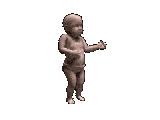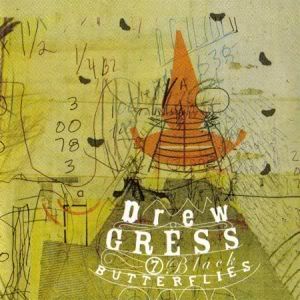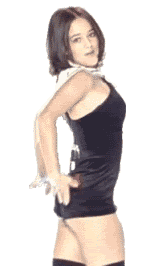
The Necks - Townsville - 2007 - Fish Of Milk
Another amazing album from the Australian experimental jazz band. It's very hard to categorise The Necks music. They have been labelled "trance jazz" and have received much critical acclaim worldwide. The music, at times seems to be structureless, and seems to float along as if there was no set pattern before the group starts playing. Almost like a band in a recording studio jamming freestyle, with no pre-conceived ideas, and waiting to see what develops. Normally in a scenario like this, a lot of rubbish would be produced. However, The Necks know exactly what they are doing. Their music has a structure, albeit irregular, and sometimes seemingly aimless. Their music is normally composed of very long disciplined and deliberate passages. These passages are developed very slowly, with extreme patience, and gradually evolve into wonderful musical pieces. This album will please your aural senses with it's unique rhythmic patterns, and often a style reminiscent of early seventies minimalistic Krautrock. This is quite accessable music, and very enjoyable. Check out the discography of this amazingly talented band. There is info on their "Silent Night" album @ NEX/SILNI
TRACKS
1. Townsville
BAND
Lloyd Swanton (bass)
Tony Buck (drums)
Chris Abrahams (piano)
Recorded Live at Riverway Arts Centre, Thuringowa, Australia, 15th February 2007
BIO (Wikipedia)
The Necks are an experimental jazz trio from Sydney, Australia, comprising Chris Abrahams on piano and Hammond organ, Tony Buck on drums, percussion and electric guitar and Lloyd Swanton on bass guitar and double bass. The band plays improvisational pieces of up to an hour in length that explore the development and demise of repeating musical figures. As well as jazz, their sound could be said to be reminiscent of Krautrock. Typically a live performance will begin very quietly with one of the musicians playing something very simple. One by one, the other two will join with their own contributions, all three independent yet intertwined. As the 'piece' builds through subtle micro-changes, the interaction of their instruments creates layers of harmonics and prismatic washes of sound that lead some to appellation 'trance jazz'. Instant by instant, their music seems driven not so much by the convention of cause and effect, but by the 'insistent demand of the moment'. Consequently their live performances can be challenging for those expecting a conventional musical experience, as The Necks' music may remain in a seemingly interminable 'holding pattern' until, paradoxically, sufficient momentum has built up for a break-out into the next phase of development. The Necks are also well known in Europe. Their soundtrack for The Boys was nominated for ARIA Best Soundtrack Album, AFI Best Musical Score and Australian Guild of Screen Composers Award. They have also recorded soundtracks for What's The Deal? (1997) and In the Mind of the Architect (three one-hour ABC-TV documentaries, 2000). Venues played in Sydney include The Basement, the Harbourside Brasserie, and the Vanguard in Newtown. A performance at the Sydney Opera House in 2003 was interrupted by the venue management due to a minor technical problem, to the obvious dissatisfaction of band and audience. In Melbourne, they have played numerous times at The Corner Hotel in Richmond. In 2006 the Necks played at the Melbourne Town Hall with Abrahams playing the pipe organ instead of piano. Unfortunately a hard drive failure meant the recording of that performance was also interrupted, much to the dismay of the band.
MORE ABOUT THE NECKS
Unclassifiable, the Necks stand aside any other musical act Australia has gave birth to. Neither jazz nor rock, this deceptive piano trio has kept a single line of conduct throughout its career. They usually start playing a very basic melodic and rhythmic figure, and then keep going at it for an hour, gradually introducing microscopic changes and variations. Some critics have compared them to Krautrock groups like Can and Faust. Others find similarities in the works of minimalist composers like LaMonte Young, Tony Conrad, even Philip Glass. The Necks were formed in Sydney, Australia, back in 1987. The original lineup of pianist Chris Abrahams, bassist Lloyd Swanton, and drummer Tony Buck remained stable, even though they all lead busy and highly different careers. Abrahams is an acclaimed session keyboardist who has released a couple of solo piano albums, has written music for film and television, and toured the world in 1993 with the rock group Midnight Oil. Swanton is a much in-demand session jazz bassist and a regular of the jazz festival circuit. He has played in the Benders and the Catholics, and accompanied Stephen Cummings and Sting. Buck spends most of his time in avant-garde circles, with multiple collaborations and projects. His best known engagements have include the trio PERIL and the klezmer-punk group Kletka Red. The Necks' first album came out in 1989 on their own label, Fish of Milk. The reviews were enthusiastic, most people praising the group's ability to blend simplicity and experimentation. They would play whenever the three musicians were in Australia at the same time. The next three albums experimented with the format, integrating occasional guests (Stevie Wishart on Aquatic), electronics, and more. But, by the 1998 Piano Bass Drums, the recipe had been fixed and would not change anymore. In 1996, the label Private Music released Sex in the United States. It was the group's first exposure on the American continent and it did not get them far. But Europe was catching on and the group began a series of annual tours there. Piano Bass Drums and the soundtrack for Rowan Woods' film The Boys both received Australian award nominations in 1998. The more energetic, almost space rocking Hanging Gardens, released in 1999, opened more doors, including a first American tour in late 2001. The album was picked up for distribution by the British avant-garde label ReR Megacorp the same year. Another North-American tour in 2002 followed the release of Aether, the group's studio masterpiece. Drive By followed in 2003. © François Couture, All Music Guide
REVIEWS
This extraordinary Australian trio have just entered their third decade, and Townsville, a live 53-minute recording, is a fine example of what you might expect at one of their totally improvised gigs. Superficially, they are a traditional jazz trio (piano, double bass, drums) yet their unclassifiable music falls somewhere between jazz, ambient, minimalism and the avant garde. Likewise, the usual problems that beset live albums (irritating audience participation routines, had-to-be-there levels of excitedness, poor sound quality) simply don't apply; this is every bit as engaging as any of their studio efforts. The Necks' last studio album Chemist (2006) moved away from a long-established format of single hour-long pieces (with a suite of three twenty-minute tracks) so Townsville marks a return to familiar territory. What's initially most notable is the lack of any regular metre from drummer Tony Buck. Completely ditching drums (possibly except for a subtle sounding of the 'kick') he spends the entire duration tapping out silvery cymbal patterns as steady but irregular as falling rain drops – something suggested by Emma Walker's lovely cover painting – and fondling a few tinkly percussive items. It's bass player Lloyd Swanton who actually initiates the piece with a few hesitant plucked notes, but before long, he’s worrying the strings with his bow, or creating great shuddering smears of sound suggestive of distant thunder. Just trying to work out how he makes such noises is part of the wonderful mystery of this music. At first, it might seem as though pianist Chris Abrahams dominates, with dense, trilling clusters of notes cascading from both hands throughout. However, on closer listening, you can hear the creative ebb and flow (and the effect strongly evokes tidal forces, waves surging up and down a beach) shifting between the players in startlingly organic and democratic cadences. They all seem to reach an intense crescendo around 48 minutes in, as an Abrahams motif suggests an exotic bird call…or something. Oddly, the closest thing I can compare this to is the work of another Australian – Paul Schütze's ''Throat Full Of Stars'' from the 1995 album Apart. Blue Peter would suggest making up your own visuals anew each time, changing them according to mood; Townsville is a delightfully dreamy, drifting piece that rewards repeated listens and encourages the imagination to run riot. You’ve read this far; you deserve it. © Jon Lusk, 26/10/07, www.bbc.co.uk
Lloyd Swanton (bass), Tony Buck (drums) and Chris Abrahams (piano) have built up a considerable repuation in the past few years Ì they could have sold out at the Vortex for a residency of a week or so, rather than just selling out two nights, such was the demand for tickets Ì and this album, 53 minutes of music recorded live at the Riverway Arts Centre, Thuringowa, in their native Australia, goes some way towards explaining the phenomenon. Blended from a beguiling mix of minimalism and trance music with just a pinch of jazz improvisation, their performance relies for its success on fixing the audience's attention on the tiny changes in rhythm, the odd little hints of melody, the almost imperceptible dynamic variations that creep into their music from time to time Ì this is definitely not jazz-piano-trio music as we know it, but a horse of an entirely different colour, owing more to the likes of Tony Scott's music for meditation and other joys than to, say, Bill Evans or Keith Jarrett. Those who like their music informed by virtuosity, wit and panache will swiftly become impatient; the trick is to surrender without such expectations © www.vortexjazz.co.uk/cd-reviews/townsville.html
Cult Australian experimentalists The Necks return with this follow up to last year's wonderful Chemist album. While that album proved to be a break in form for the band, wit the disc divided into discreet tracks, this new work returns to their more customary format of single, lengthy pieces. Townsville begins with a few tentative bass figures, paving the way for fluttering, sensitive cymbal textures and the introduction of Chris Abrahams' always-impressive piano improvisations. Starting with this fairly conventional jazz trio format the group avoid the more obvious route of wandering freeform elaboration, instead maintaining a minimal, almost krautrock-like discipline when it comes to rhythmic structures, those solid, unwavering cymbal constructions keeping a steady bedrock for Abrahams to venture out into increasingly florid passages. The kinds of intervals he chooses bring to mind the sort of thing you might hear on a particularly energetic Harold Budd composition, and by the time you get halfway into the disc Lloyd Swanton's bass is following suit, delivering evermore elaborate phrases. Soon the rhythm has shifted into a kind of wave-like motion, increasing and decreasing in tempo as if in some sort of undulation. The intensity of the piece heightens as the disc goes on, with a surge in low-end heft that carries the group onto a natural conclusion after an impressively restrained, structured fifty minutes of jazz-inspired minimalism and remarkable musicianship. © www.boomkat.com
A bit of a change of pace for Australian free jazz trio the Necks, Townsville is a live album recorded in the fairly remote Australian town of the same name. A single improvised piece (as nearly all of the Necks' live performances are) in the 53-minute range, Townsville is the trio in full-on Erik Satie-meets-Brian Eno mode, with drummer Tony Buck sticking almost exclusively to cymbals and hand percussion, and bassist Lloyd Swanton at times playing so quietly as to be almost inaudible, and at others repeatedly returning to one simple recurring figure. This leaves pianist Chris Abrahams to take the organizational lead, playing wave-like clusters of Cecil Taylor-like chords that tinkle off into near silence before roaring back like surf on an Australian beach. That's pretty much it for the duration of the piece, an extended exploration of a placid mood that meanders pleasantly for most of an hour before quietly petering away. For a trio best known for playing hard-edged jazz with rock intensity, Townsville is an intriguing but inconclusive side trip. © Stewart Mason, All Music Guide
If you were scanning the Necks’ career for blemishes, the biggest streak – a great dirty stain running right across it – would be that no band should consistently be this good. The format is, by now, well-established: unscripted piano, bass and drums for an extended playing time; jazz, but not as Norah Jones knows it. Their last recorded release, Chemist, broke expectations to good effect – it was a series of relatively short workouts. Townsville, a recording from a gig near the titular city, is a return to the earlier template. It is, again, a brilliantly subtle study in tension and release. Closer to works like Sex, Townsville sees the group more active than some mid-period stuff: it’s still minimalism, but in a busier mood. The Necks emphasise duration here; a tracing of lines and the joy of their deviation, the holding in mind of one pattern as you hear it tilted. Like some blissful Australian meeting of Morton Feldman, John Cage and Steve Reich, The Necks manage to be both spacious and insistent. As pure background music, the unfortunate fate of many jazz trios, The Necks would never do – it’s all too fraught and frisky. There’s a pace to their motion. They do not stand still. On Townsville, the set begins with the see-sawing melody of Lloyd Swanton’s beautiful double bass. The others enter unobtrusively: Tony Buck taps his symbols into the rhythm, prising open his own space; Chris Abrahams, with signature lyricism, wanders up and down the piano, eight fingers in search of a melody. It starts here and goes through every permutation imaginable, twisting inside itself like an Escher illusion, taking delight in thoroughly exploring this creation of theirs. Changes happen, each one seeming like a mammoth event. Booming bass chords. Lunging piano changes. Kick drum strikes. The Necks successfully get at what almost an entire global scene of post-rockers with delay pedals failed to express: a slow-motion glory, a weaving of bitter and sweet that is never glib, a singular vocabulary of musical invention – unfamiliar and yet still deeply affecting. The Necks are manic and poised, patient and restless. There’s something vital in their every outing. © Ben Gook, © 2008 Mess+Noise p/l. All rights reserved







